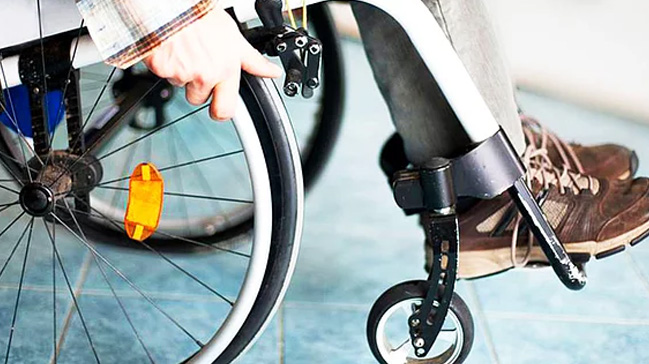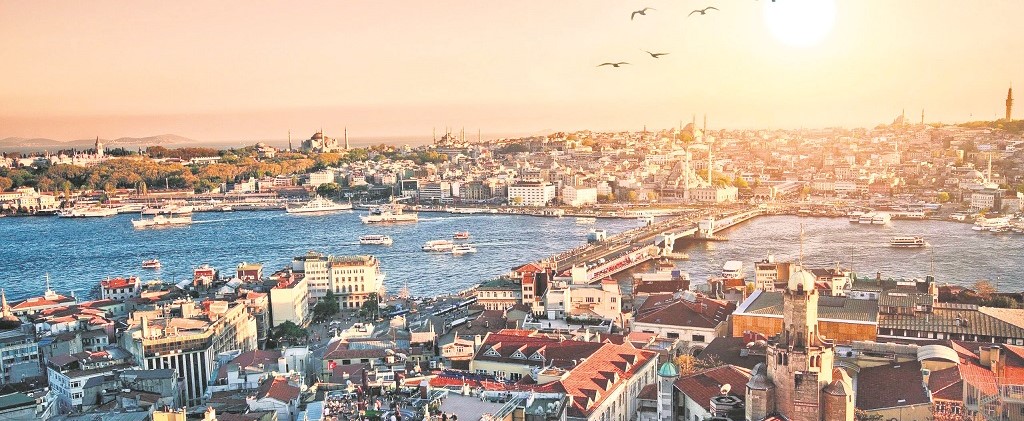
A PENINSULA ON THE MARMARA SEA KAPIDAG
The ferry headed out to sea from the quay at the southern mouth of the Bosphorus and picked up speed. Behind us Istanbul became gradually smaller as it receded into the distance, disappearing altogether an hour later. The ship seemed reduced to a tiny speck in the middle of the Marmara Sea. For a long time the gulls swooped alongside, seizing food thrown by the passengers and rising into the air again. No one seemed in a hurry for this pleasant journey to end.
When the boat reached Bandirma most of the passengers would be heading for the resort of Erdek to spend the weekend in guest houses, hotels or holiday homes, but we planned to skirt the town and explore the lesser known parts of the Kapidag peninsula, visiting all its villages and coves. Four hours later the peninsula appeared as a blurred shape on the horizon, and half an hour later we were entering the Gulf of Bandirma. The delightful voyage was over, and we were soon standing on dry land again.
Apart from the small town of Erdek there are seventeen villages on the Kapidag peninsula. Our first stop on the Erdek road was the village of Asagi Yapici, situated on the isthmus. After a short break we were off again to Hamamli, a village 9 kilometres from Erdek. The village stands on the acropolis of the ancient city of Kyzikos, and some ruins can still be seen. In the 3rd century BC Kapidag was an island, separated from the mainland by a narrow strait, along which the Argonauts sailed to Kyzikos on their way to find the Golden Fleece.
From the village of Hamamli we drove to Yukari Yapici, and from there to Kirazli Monastery, 17 kilometres from the main road. The Monastery of Panaghia Theotokos Faneromeni, known as Kirazli Manastiri (Monastery of Cherries) to the locals, was inhabited until 1923. The 90-room building has a church in the courtyard. After wandering around the ruins, we returned to Yukari Yapici. We intended to travel anticlockwise around the peninsula via the village of Ballipinar (alias Kocaburgaz) on the north coast.
The east-bound road wound through woods of chestnut, hornbeam, beech and oak, and as we drove we looked out for wild birds and animals. The peninsula was declared a wildlife sanctuary in 1978, and hunting is forbidden here, so its forests and hills are home to eagles, hawks, falcons, beavers, martens, wild boars, polecats, foxes, jackals, roe deer, and rabbits. There are also fallow deer, thought to have been introduced here from the Belgrat forests north of Istanbul, and today forming a colony estimated at 70 to 75 in number.
Passing the seaside villages of Tatlisu and Dalyan on the east coast, with their numerous holiday homes, we arrived at Karsiyaka (Paremo). This large village is home to a community of Pomak Turks who migrated here from Kavala in northern Greece. Here there was a wedding going on, to which we received an invitation. The crowd of guests made a memorable sight, the girls and women dressed in traditional costume consisting of red salvar (baggy trousers), brightly patterned dresses, black coats known as saya, and colourful headscarves.

After drinking thirstily from the village fountain, we watched the wedding celebrations for a while and then took our leave. Our next stop was the village of Çakil at the northeast extremity of Kapidag. This village was once inhabited by Greeks from Crete and used to be a busy port of call for shipping, but today it has lost its importance and is a quiet backwater. In the harbour there is a gigantic statue of Atatürk. From Çakil the road turned westwards to Ballipinar, the former Kocaburgaz, which like Karsiyaka is inhabited by Pomaks from Kavala.
The village is a picturesque place, with narrow paved streets, wooden houses and a ruined church. It is famous for its red onions, producing nearly 2500 tons a year. If you happen to come at the time of the onion harvest, you will find all the villagers sitting in the shade of makeshift arbours along the shore busy braiding the onion stems to form the long bunches which hang to such decorative effect in greengrocers shops.
On the way to the village of Ormanli we passed onion fields squeezed into the fertile land between small coves. The views were magnificent, with forest clad hills on the one hand and pretty coves on the other, some with tiny villages on the shore. The village of Turan was one such. This area attracts many Turkish holidaymakers, and there are plenty of pensions in the villages of Turan, Doganlar and Ilhanli. From Ilhanli the road turns south along the west side of the peninsula to the village of Narli, beyond which is Ocaklar.
Both these villages have good asphalt roads and are served by minibuses from Erdek for visitors without their own transport. They offer a choice of accommodation for visitors in reasonably priced and clean pensions. Kapidag is ideal for weekend breaks throughout the year, and its beautiful sand beaches and sea make it equally popular for summer holidays. Exploring this unspoilt area is a delight. Around the coast each bend in the road reveals another lovely cove, and visitors can walk in the footsteps of the Argonauts when they discover the ancient ruins of Kyzikos. Source: Skylife May / 2000



